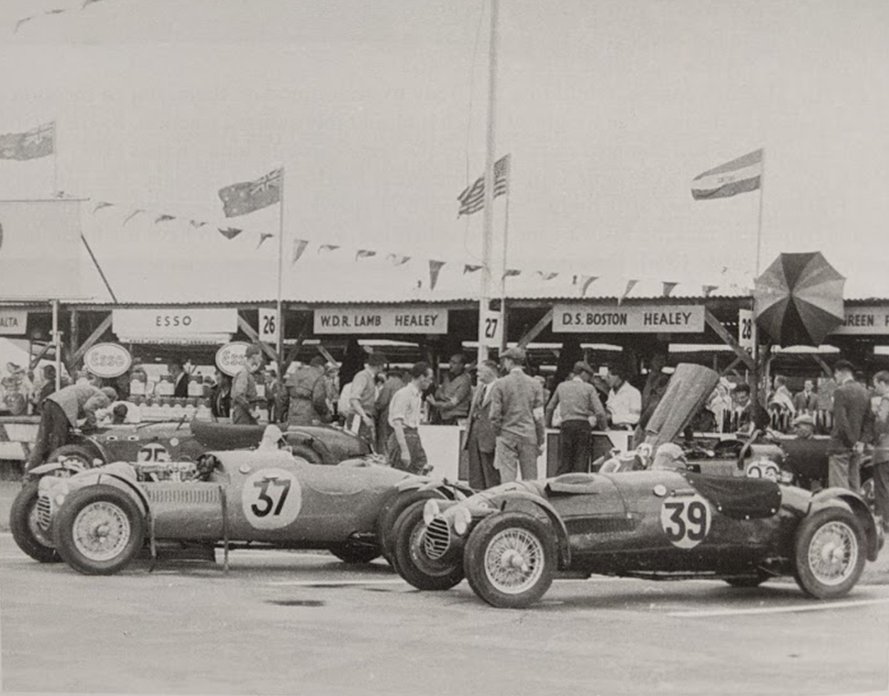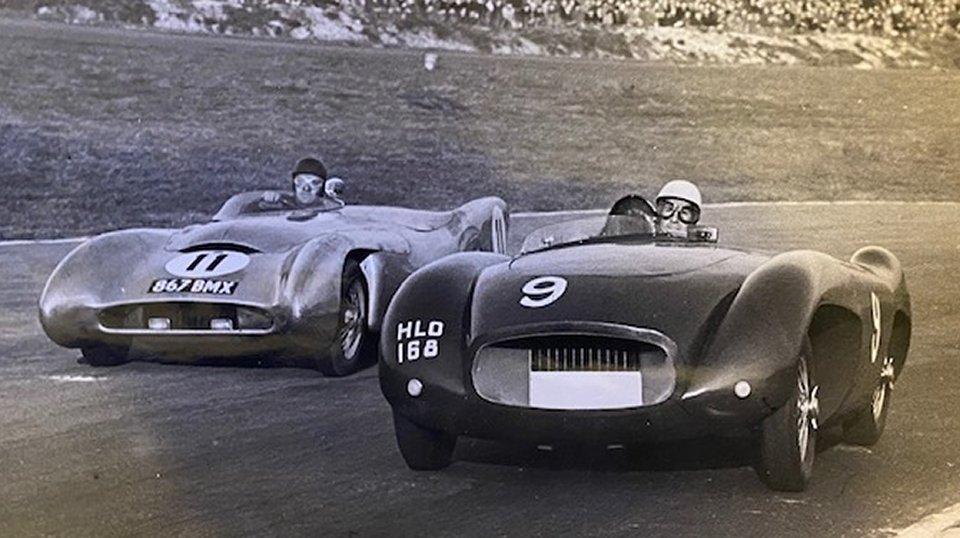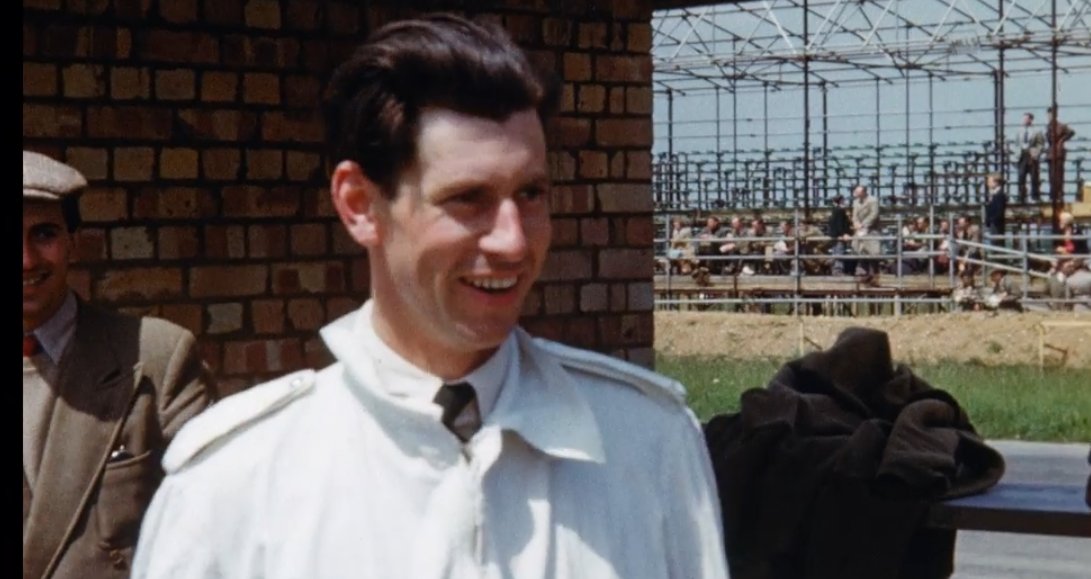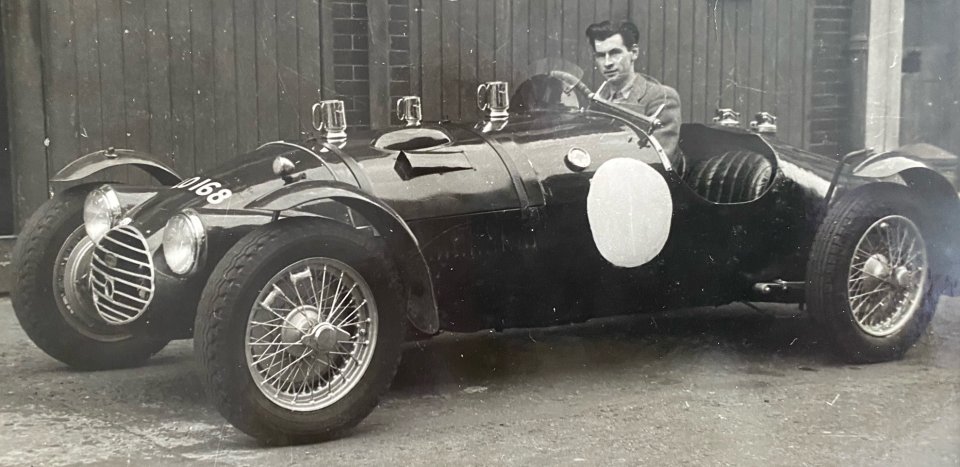David Moffat Drummond Blakely’s motor racing career was brief. It only lasted from 1951 to 1955 as it was cut short by his death so we will never know if he could have gone on to greater things. His step-father, Humphrey Cook, encouraged David to try the hotel trade but David’s real interest was motor racing.
He started racing in club events in 1951 with a lightweight, ex-Le Mans, H.R.G. with which he had some success. The H.R.G. was one of a pair that Len Gibbs of Slades Garage, Penn, had purchased in 1950. Gibbs kept one of them (HXR 530) which he and his wife Bluebelle raced regularly, but sold the second one (HLO 168) to Michael Keen who soon passed it on to David Blakely. Herbert Druce remembers Michael Keen moved away from Tylers Green after he was involved in an accident at Goodwood, and David Blakely calling at the garage most days, living at The Orchard, only a few yards up Beacon Hil from Slades Garage.
During 1952 Blakely raced it several times at Goodwood and took part in the 8 Clubs Meeting at Silverstone (where Bluebelle Gibbs was also competing) before returning to Goodwood for the 9 Hour Race where he shared the driving with Anthony Findlater finishing 11th.

The two lightweight, ex-Le Mans, H.R.G.s preparing for the 1952 Goodwood 9-Hour race. Blakely and Findlater drove no. 39.
Also taking part in the 9 Hour race was Len Gibbs with Anthony Heal as co-driver in the other lightweight HRG. A year later Blakeley and Findlater were back at Goodwood for the 1953 9 Hour Race by which time the car had been fitted with an experimental twin-overhead camshaft engine developed by the HRG Works and on loan from them. The car retired with engine problems.
During the year David also started to drive for Lionel Leonard who had built a special bodied sports car with an MG engine in a Trojeiro chassis. The following year he raced this car at Snetterton, Oulton Park and in the sports car race at Silverstone on the day of the 1954 British Grand Prix.
In 1954, he set himself up as a sports car manufacturer with a legacy from his father. He employed Findlater to build a special tubular chassis with Volkswagen front suspension and a De Dion rear axle. The experimental engine from the HRG was fitted into this chassis which was named “The Emperor”. It was intended to offer cars like this for sale but finance was tight, and his step-father Humphrey Cook helped to settle some bills. In the Emperor’s first and last race at Brands Hatch on Boxing Day 1954, Blakely was able to finish in 2nd place.

Blakely racing The Emperor, a car of his own creation, at Brands Hatch on Boxing Day 1954. The tubular chassis designed by Anthony Findlater was powered by a prototype twin-overhead camshaft H.R.G.
He was booked to race at the Goodwood Easter meeting 12th April 1955, two days after his tragic death. He had also been hired by Bristol Motor to drive one of the two factory Bristol 450 sportscars, (based on the ERA G-type Formula Two car of 1952), entered in the 24 Hours of Le Mans, scheduled to be contested in June of that same year, 1955.
How things would have evolved we do not know, as the story came to an abrupt and tragic end when David Blakely was murdered by his girlfriend Ruth Ellis on Easter Sunday, 10 April 1955. He is buried in Penn New Churchyard plot number 48. His mother Anne lies in the adjacent plot number 30, with her husband Humphrey Cook.
Sources: Ian Dussek, H.R.G. : The Sportsman’s Ideal, Dussek 2010.
© Oliver Heal, September 2021
See also Notable Burials: David Blakely


